7 most modern astronaut ships on the planet
Recently, astronomers have given clear evidence of the " Second Earth " planet orbiting Proxima Centauri - the star closest to the Sun - the newly discovered " strange " planet recently. Although the star system is our cosmic " neighbor ", the distance from our Earth is about 4.2 light-years or 25 trillion miles. With this distance, can we go to this " newly discovered " planet?
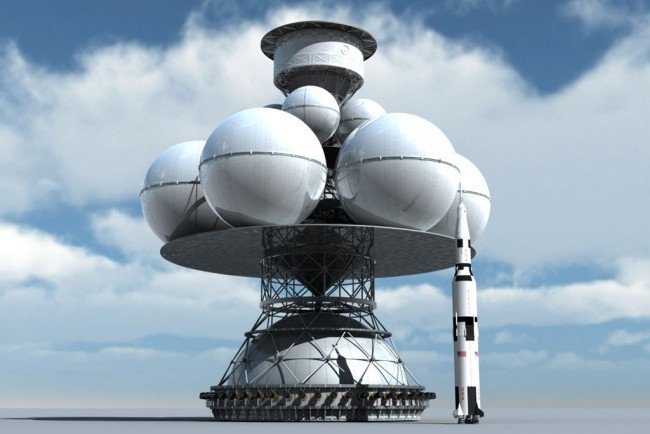 7 most modern astronaut ships on the planet Picture 1 Photo source: Adrian Mann
7 most modern astronaut ships on the planet Picture 1 Photo source: Adrian Mann
Even the nearest stars have to take tens of thousands of years to fly by conventional spacecraft to be able to reach, using the current exploration equipment to explore the solar system. These spacecraft are controlled by a combination of chemical rockets, low repulsive ion motion and gravity support orbits - called " slingshot maneuvers " around the Sun or Big planets to give them a big " explosion " in speed.
But if we want to make a trip outside the solar system, we will need spacecraft to travel a little faster - like Project Daedalus giant thermonuclear missile combined with NASA's Saturn V missiles - like In the above illustration, created by graphic engineer and space artist Adrian Mann , their mission is to provide future spatial technological characteristics. Here are 7 ways that robots or even adventurers can access Proxima Centauri or other nearby universe areas.
1. Daedalus project
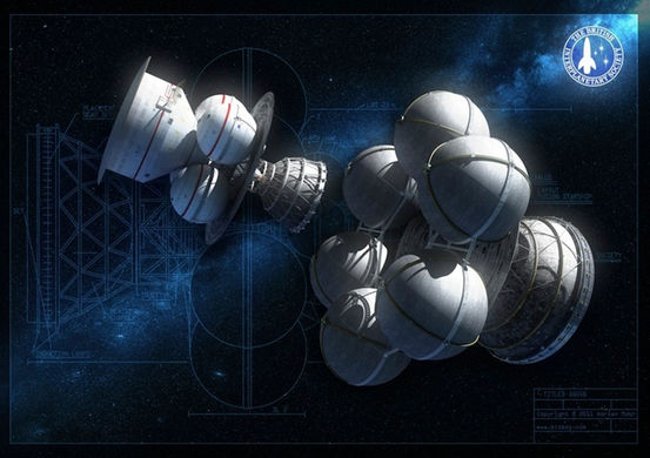 7 most modern astronaut ships on the planet Picture 2 Photo source: Adrian Mann
7 most modern astronaut ships on the planet Picture 2 Photo source: Adrian Mann
The Daedalus project is a design concept for interstellar sensors developed in the 1970s by a group of technical experts from the British Interplanetary Society . The destination is Barnard 's star - a red dwarf star about six light years away, with many similarities to Proxima Centauri - where astronomers now report that they have found symbols of a living planet. When presenting the Daedalus project, some astronomers believed that a giant gas planet could be in orbit around Barnard's star, but since then, no planet has been found in the system. system of stars.
The five-year project launched the Daedalus spacecraft design - consisting of two floors, 54,000 tons of nuclear missiles that would increase the speed of light by about 12% compared to the 400-ton robotic probe. This helps the probe to make a 6 light-year journey to the Barnard star about 50 years long.
Daedalus spacecraft missiles are supported by nuclear fusion and use electron beams to detonate a flow of bullets with helium-3 fuel - which can be mined from the Moon 's surface . Even the engines will consume tens of thousands of tons of fuel so that the spacecraft can fly at a maximum speed of four years, because there are no any reserves. The end result is a 50-year journey that will take only 70 hours to fly by spaceship to reach the " target " system, before the spacecraft gains speed into interstellar space.
Scientist Ian Crawford , professor of planetary science and space biology at Birkbeck University in the UK, said: "The Daedalus Universe is too big to take off from the surface of the Earth, so it will be built in orbit - which means that the Daedalus spacecraft cannot be created without a built-in space scale - something that is not currently available . "
Professor Crawford argues that the science behind the Daedalus project concept is now easier to understand when the spacecraft is designed. He said: " The cost of manufacturing and technological challenges are huge - meaning it will take more than 100 years to create something like Daedalus in the stars ."
2. Project Icarus
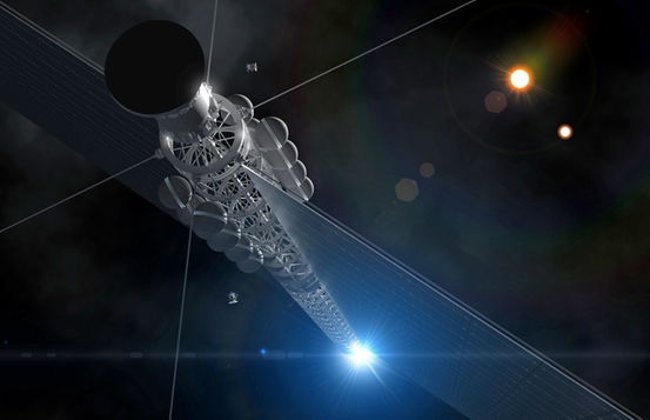 7 most modern astronaut ships on the planet Picture 3 Photo source: Adrian Mann
7 most modern astronaut ships on the planet Picture 3 Photo source: Adrian Mann
Since the 1970s, the concepts of the Daedalus project have been the inspiration for the Icarus project , an ongoing project to be discussed by the British Planetary Federation and the organization of interstellar Icarus - the international network of scientists. learners, engineers and enthusiasts - all hope to develop their potential in the interstellar space flight in 2100.
Project Icarus is designed to reach any star located about 22 light years away from Earth - a habitable planet - that is, if a planet is located around Proxima Centauri star, it has Can become a desired destination.
Crawford said: " The purpose of the Icarus project is to update Daedalus' designs along with some new ideas and new technologies. One of the proposed improvements is the fusion missile engines that use the course. Different nuclear materials are detonated by light quantum transmitters instead of electron beams - a technological technique that can be derived from recent advances in laser ignition at the Ignition National Laboratory ( National Ignition Facility of Lawrence Livermore National Laboratory in California ".
The Icarus probe is smaller in size than the 400-ton probe proposed in the Daedalus project, thanks to advances in electronic scaling - robots and future nanotechnology - meaning spacecraft. will carry less fuel but can still reach the maximum speed.
3. Light-sail spacecraft
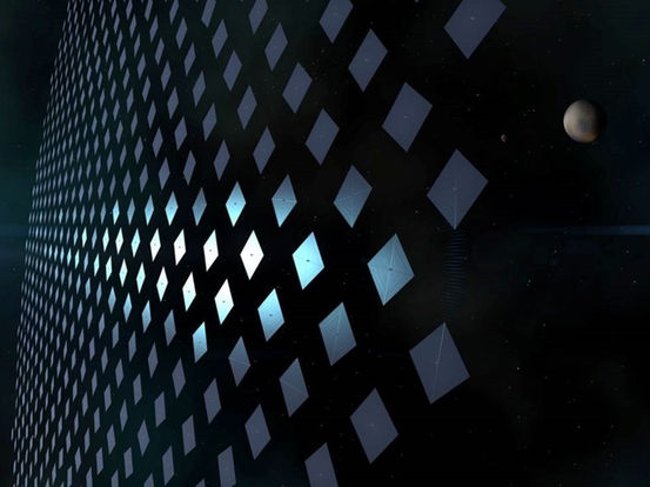 7 most modern astronaut ships on the planet Picture 4 Photo source: Adrian Mann
7 most modern astronaut ships on the planet Picture 4 Photo source: Adrian Mann
Crawford said: " Our most accurate prediction about the space trip is that there may be no need to use a rocket. The sails glow using the pressure of light to push a payload - have and is being considered for use in interplanetary space probes In 2010, the test of Japan's IKAROS spacecraft successfully used the light sail spacecraft 20 meters wide to rehearse six months during the trip. to Venus
Although the glowing sail is regulated by sunlight - an effective way to discover the solar system, they are not fast enough to cover the interstellar distance over a period of time. physical.
Crawford said: " The answer may be to use strong lasers to push the sails glowing at a very high speed along with the rising light at the beginning of departure, until the spacecraft goes too far to source. The laser can push a stronger force to the beams of light . "
Since moving lasers can be built on Earth or in orbit, light-sail interstellar spacecraft does not need to carry fuel on the journey. Therefore, the weight of the spacecraft can be kept to a minimum.
Laser-controlled light-sail spacecraft is the first step in the Breakthrough Starshot project ( a $ 100 million Breakthrough Initiatives program ) released this year by investor Yuri Milner and physicist Stephen Hawking. . This project aims to build a working model of 2036 at the cost of the final task of about US $ 10 billion.
The project intends to have about 1,000 " StarChip " spacecraft size-only - each weighs a few grams and is attached to a " mother ship " in orbit before accelerating by laser on the ground at a speed of about 15 to 20% of the speed of light.
This will help the spacecraft carry out a four-light-year journey to the Alpha Centauri system - a three-star system consisting of the host star Proxima Centauri and the planet of life - in about 20 to 30 years.
The concepts behind Breakthrough Starshot project were studied by Philip Lubin - professor of cosmology at the University of California in Santa Barbara - who said: " The biggest challenge is to create enough laser energy. strong enough to control the sail-ship spacecraft ".
4. Bussard ramjet spacecraft
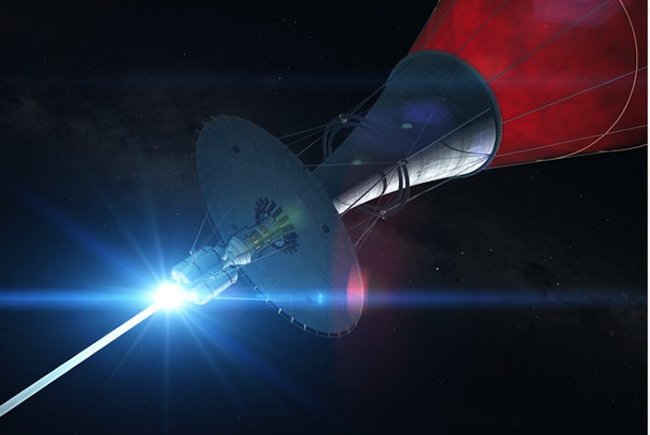 7 most modern astronaut ships on the planet Picture 5 Photo source: Adrian Mann
7 most modern astronaut ships on the planet Picture 5 Photo source: Adrian Mann
The concept of the Bussard Ramjet spacecraft was proposed by physicist Robert Bussard in 1960, combining the powerful thrust of fusion missiles, the low fuel requirements of glowing sails.
Instead of carrying fuel, the Bussard Ramjet spacecraft will create tiny traces of gas and dust found in interstellar space, called " Interstellar Medium ", used use a magnetic electric field from a giant funnel-shaped shape, stretching for thousands of miles in front of the spacecraft.
Hydrogen gas from Medium Interstellar will be compressed and used as fuel in thermonuclear missiles located behind the spacecraft to boost it forward.
Theoretically, a spacecraft controlled by the Bussard Ramjet can continue to accelerate, as long as there is enough interstellar gas to create thrust and can reach a fraction of the speed. light level.
As a result, the Bussard spacecraft is said to be a long-term and honorable service in sci-fi studies. Prominent are Larry Niven's series of novels and " Known Space " short stories, including the book " Ringworld " and the " Tau-Zero " novel by Poul Anderson in 1970 - an interstellar crew that makes ships The Bussard universe is heavily influenced by the relative speed to avoid being destroyed.
Unfortunately, Medium Interstellar turns around our solar system and nearby stars are often very small and scientists have predicted that there is not enough hydrogen gas to fuel the Bussard Ramjet spacecraft. . Crawford said: " It's not in the galaxy ."
However, he explained: " Some of the ideas proposed to overcome limitations include a concept known as" Ram Augmented Rocket Stellar ", which collects problems of reactive mass. In order to control the spacecraft forward, using energy for laser illumination and an "Interstellar Runway" using sediment fuel is located in front of the Bussard spacecraft's acceleration road . "
5. Antimatter rockets & moving black holes
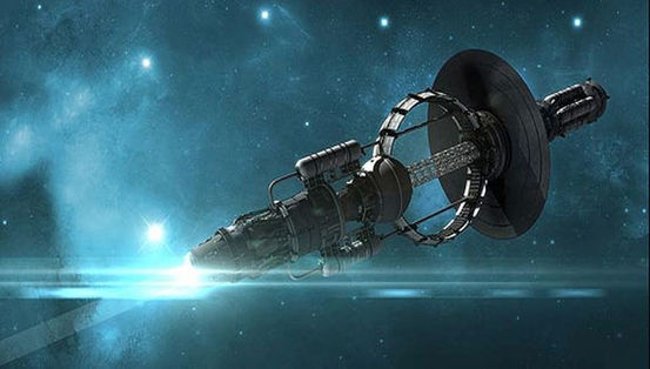 7 most modern astronaut ships on the planet Picture 6 Photo source: Adrian Mann
7 most modern astronaut ships on the planet Picture 6 Photo source: Adrian Mann
In addition to the glowing sails, giant laser beams and fusion missiles, there are a number of " strange " options for proposed interstellar travel as missiles created by antiparticles. extremely intense ( and extremely effective ) destructive effects of matter and antimatter.
Crawford said: " Antimatter will be a great rocket fuel because its energy density is very high. But of course, it does not exist in nature but we have to create it. Creating it's not only difficult, expensive, but very dangerous when done - so it can be used as a rocket fuel . "
Another proposed use of foreign physics to control the spacecraft is the " Schwarzschild Kugelblitz " motion - using a microscope, an internal artificial black hole contains an engine as its source of power.
The upper part is the idea of a ship called " SK Drive " - blocking Hawking radiation from the fast, extremely intense decay of the tiny black hole and converting it into energy used to propel the spacecraft. .
Each artificial black hole can only exist for a few years, so new black holes will be created on demand by compressing matter with laser beams .
According to the 2009 study, the SK-drive spacecraft supported by a tiny black hole with the mass of a modern tanker can increase the speed of light by 20% within 20 days. Black holes may exist for a period of three and a half years before the full decay, producing more than 160 PW ( petawatts ) or 160 thousand million watts, energy in its " life ".
6. "Slow train"
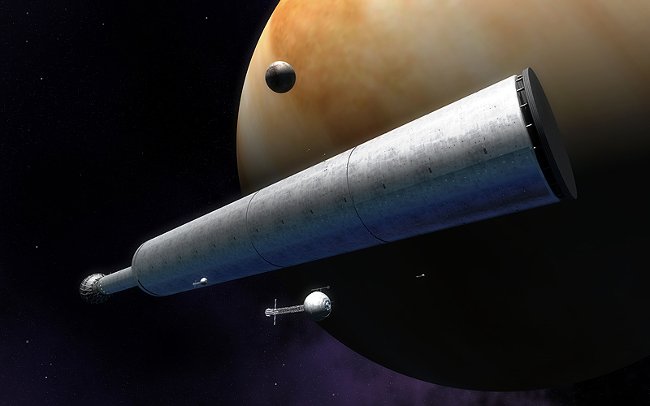 7 most modern astronaut ships on the planet Picture 7 Photo source: Adrian Mann
7 most modern astronaut ships on the planet Picture 7 Photo source: Adrian Mann
Even with super-fast moving missiles accelerating 10% or faster than the speed of light, it will take a long time to reach the stars that are very close to Earth. Although Professor Crawford is a supporter of human discovery of the solar system, he said: " The distance between the stars is so great, it takes people several hundred years to make the space trip " .
Crawford added: " I think people can discover planets more efficiently than robots, cultural reasons for people to explore space. Right now, it's right to use very well on the scope. between stars - just because of the great distance and technical difficulties, this period is almost incomprehensible . "
Even so, there are still some ideas that exist in the concept of " Slow Ship " - maybe one day to bring people to the stars, including:
Sleeper Ships , where crew members in the ship are kept in a " deep sleep " or " hovering " state during a long journey. This ship has appeared in many sci-fi movies like Stanley Kubrick's " 2001: A Space Odyssey " made in 1969, Ridley Scott's " Alien" in 1979 and James Cameron's " Avatar " in 2009.
World Ships , also known as " generation ships " or " interstellar big boats " - a giant ship with closed space that holds the number of adults and other species living on Earth. This ship made the journey to settle in " strange " planets quite comfortably, but the trip could take centuries to end. Human generations will live and die on their travels and only their descendants can reach their destination.
Embryo ships freeze human stem cells instead of " deep sleep " or still maintain human life to a distant planet - where they can " survive " and do research by A crew has a protective robot.
7. Faster-coal-light ship
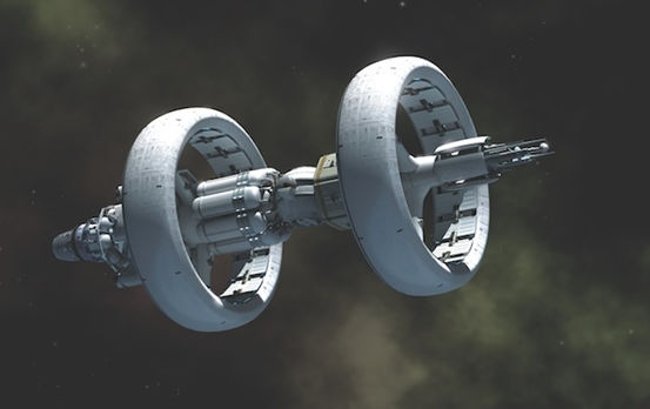 7 most modern astronaut ships on the planet Picture 8 Photo source: Adrian Mann
7 most modern astronaut ships on the planet Picture 8 Photo source: Adrian Mann
Wherever astronomers can observe the universe, relativity is always maintained. When Albert Einstein showed: " In space, it is impossible to accelerate a weight into a speed of light, and ignore it ".
However, Einstein's equations may retain some of the tricks to apply to science, ending a process by known laws in physics and carrying out a trip at a faster rate than light. ( FTL ) - Holy Grail for generations of science fans.
The most famous concept of science about the journey FLT is Alcubierre engine, proposed by theoretical physicist Miguel Alcubierre in 1994.
Proposed engines operate by using very strong gravitational forces, created by two strange rotations of dense matter to shrink the space in front of the spacecraft, while expand the space behind it, at speed can pass the speed of light.
Alcubierre's proposal requires a strange material about circles that are not known to exist, spacecraft located inside the " slightly porous bubble " created by the engine will never go faster than light in its own space, so it will not violate the theory of relativity.
Other speculative ideas for the FTL cruise ship include the use of a multi-dimensional deep hole - theoretically they do not exist - to reach the middle of an area of entangled distance or recklessly pass through the edges of a Large black hole - rotated as described in Christopher Nolan's " Interstellar " film in 2014.
But Professor Crawford also noted that: " The concept of the faster-than-light spacecraft still has many unknowns and contradictions that are evident as violating the principle of causality - every situation created by situations another happened in the past and nothing was around, so it was similar to unproven proposals, even acknowledged by feasible technologies . "
Crawford said: " I don't want to hear too pessimistic issues, because I can see the great benefits that people have when traveling to stars, but the laws of physics are still the laws of physics. And it's really hard . "
You should read it
- Why have scientists found Proxima b - '2nd Earth' until now?
- 6 strange facts about Proxima Centauri b - 'Second Earth' you may not know
- How much money does it take to get to Earth 2 and how long does it take?
- Found the second planet of Proxima Centauri, the star closest to the sun
- The discovery of the 'Second Earth' can exist only 4.2 light-years away from Earth
- The mystery of the numbers of Proxima b: The 'Second Earth' on the planet may exist life
- Is Proxima b our 'neighbor' planet?
- The journey of 20 years in the universe of Cassini through impressive numbers
- Earth is light despite receiving 43 tons of dust from other planets every day
- It turns out 15 'facts' about the Earth and the universe that we still believe is completely wrong
- Travel space with splendid images of the universe
- Top 5 planets may be our 'new houses' in the future
May be interested

Listed 10 most terrible experiments on animals

Why did NASA choose Bennu as a model asteroid?

Discover the mystery of dangerous chemical weapons in ancient war

Can self-driving cars solve traffic jams?

What if the emergency exit door is open while flying?

Good news: Learning a foreign language helps increase brain elasticity






 What are the requirements for becoming an NASA astronaut?
What are the requirements for becoming an NASA astronaut? Instructions for entering codes and the latest Modern Warships codes
Instructions for entering codes and the latest Modern Warships codes Even ships are capable of being hacked remotely
Even ships are capable of being hacked remotely Astronaut wallpapers, cute astronaut wallpapers for your phone
Astronaut wallpapers, cute astronaut wallpapers for your phone Close-up production of F-35 Lightning II - the most modern fighter on the planet
Close-up production of F-35 Lightning II - the most modern fighter on the planet China claims to be the first country to bring the probe to the Moon's shadow in 2018
China claims to be the first country to bring the probe to the Moon's shadow in 2018